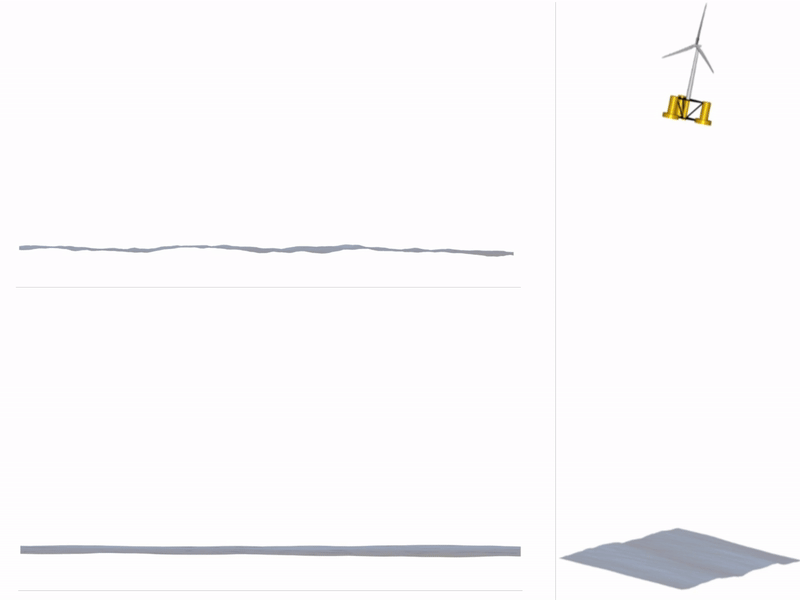Forum
Important Notice for New User Registrations
To combat an increasing number of spam and bot registrations, we now manually approve all new user registrations. While this may cause a delay until your account is approved, this step is essential to ensure the quality and security of this forum.
To help us verify your registration as legitimate, please use a clear name as user name or an official email address (such as a work, university, or similar address). If you’re concerned that we may not recognize your registration as non-spam, feel free to email us at with a request to approve your username.
Transformation of vortex elements in wake
Quote from robytian on 7. March 2024, 03:45Hi David
One piece of research I’ve been very interested in lately is also the problem of transforming vortex elements during the simulation of wake, such as having the vortex lattice reach a certain far-wake distance and then causing it to curl into a tip vortex and a root vortex filament, or the possibility of discretizing the vortex lattice into a large number of vortex particles, which is very interesting.
1.I noticed that you used a wake zone approach to coarsen the wake, there are very few descriptions of this information, can you provide some, and what was used to achieve this?
2.I noticed that in the commercial version you used the vortex particle method, I would like to until do you convert each segment of the vortex filament in the vortex lattice into one or more vortex particles, and do you have any information you can recommend for convection of vortex particles as well as the related equations for solving the induced velocities?
Thank you
BR,
Roby
Hi David
One piece of research I’ve been very interested in lately is also the problem of transforming vortex elements during the simulation of wake, such as having the vortex lattice reach a certain far-wake distance and then causing it to curl into a tip vortex and a root vortex filament, or the possibility of discretizing the vortex lattice into a large number of vortex particles, which is very interesting.
1.I noticed that you used a wake zone approach to coarsen the wake, there are very few descriptions of this information, can you provide some, and what was used to achieve this?
2.I noticed that in the commercial version you used the vortex particle method, I would like to until do you convert each segment of the vortex filament in the vortex lattice into one or more vortex particles, and do you have any information you can recommend for convection of vortex particles as well as the related equations for solving the induced velocities?
Thank you
BR,
Roby
Quote from David on 8. March 2024, 13:52Hello Roby,
the wake zone approach in QBlade only serves the purpose of reducing the computational cost by coarsening the wake resolution successively, the further away it is from the region of interest (the rotor plane). This is implemented by simply “merging” trailing vortex elements, and redistributing the vorticity of interconnected shed vortex elements. There is no particular theory behind this, other than the conservation of the vorticity. How this is implemented in particular is up to the modelers choice, different codes do this differently.
Regarding vortex particles: This is a very broad subject, but fortunately there is a lot of literature available on this topic. For example the PhD thesis of E. Branlard gives a very good introduction and overview of vortex methods in the wind energy context. In QBlade, we simply convert filaments to particles after a predefined vortex age. A cruicial step for the treatment of vortex particles in the far wake is a remeshing step, during which the vorticity of the far wake is redristributed on a regular grid to prevent “clumping” of vortex particles.
BR,
David
Hello Roby,
the wake zone approach in QBlade only serves the purpose of reducing the computational cost by coarsening the wake resolution successively, the further away it is from the region of interest (the rotor plane). This is implemented by simply “merging” trailing vortex elements, and redistributing the vorticity of interconnected shed vortex elements. There is no particular theory behind this, other than the conservation of the vorticity. How this is implemented in particular is up to the modelers choice, different codes do this differently.
Regarding vortex particles: This is a very broad subject, but fortunately there is a lot of literature available on this topic. For example the PhD thesis of E. Branlard gives a very good introduction and overview of vortex methods in the wind energy context. In QBlade, we simply convert filaments to particles after a predefined vortex age. A cruicial step for the treatment of vortex particles in the far wake is a remeshing step, during which the vorticity of the far wake is redristributed on a regular grid to prevent “clumping” of vortex particles.
BR,
David


